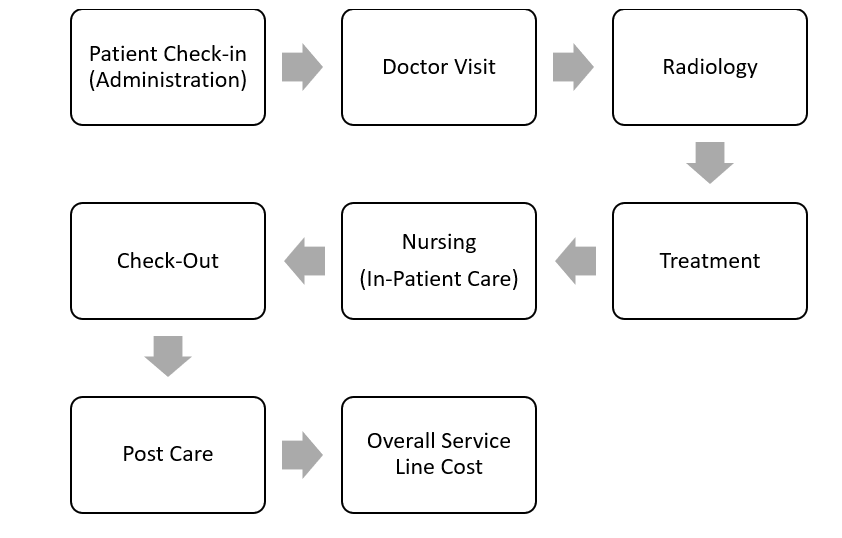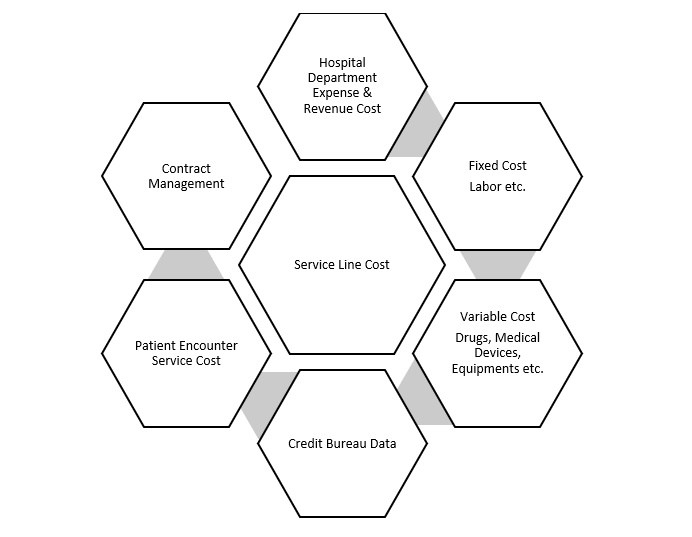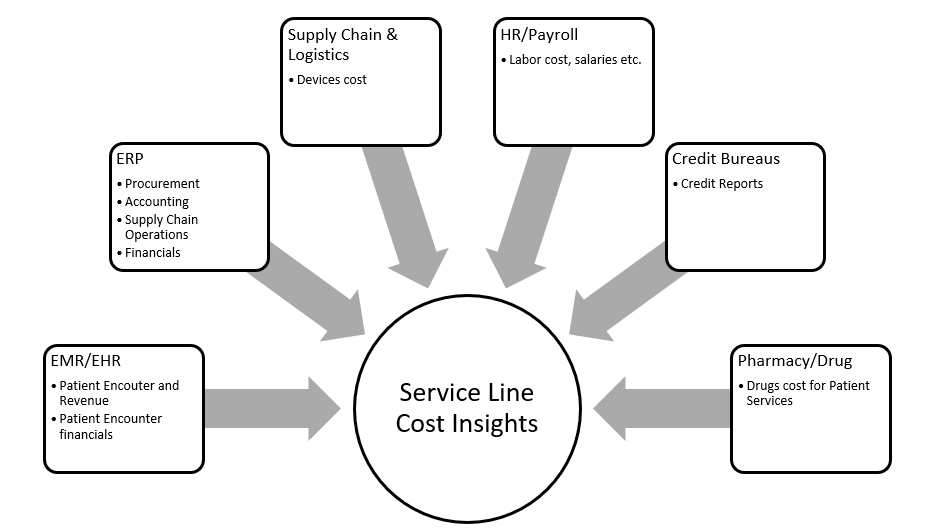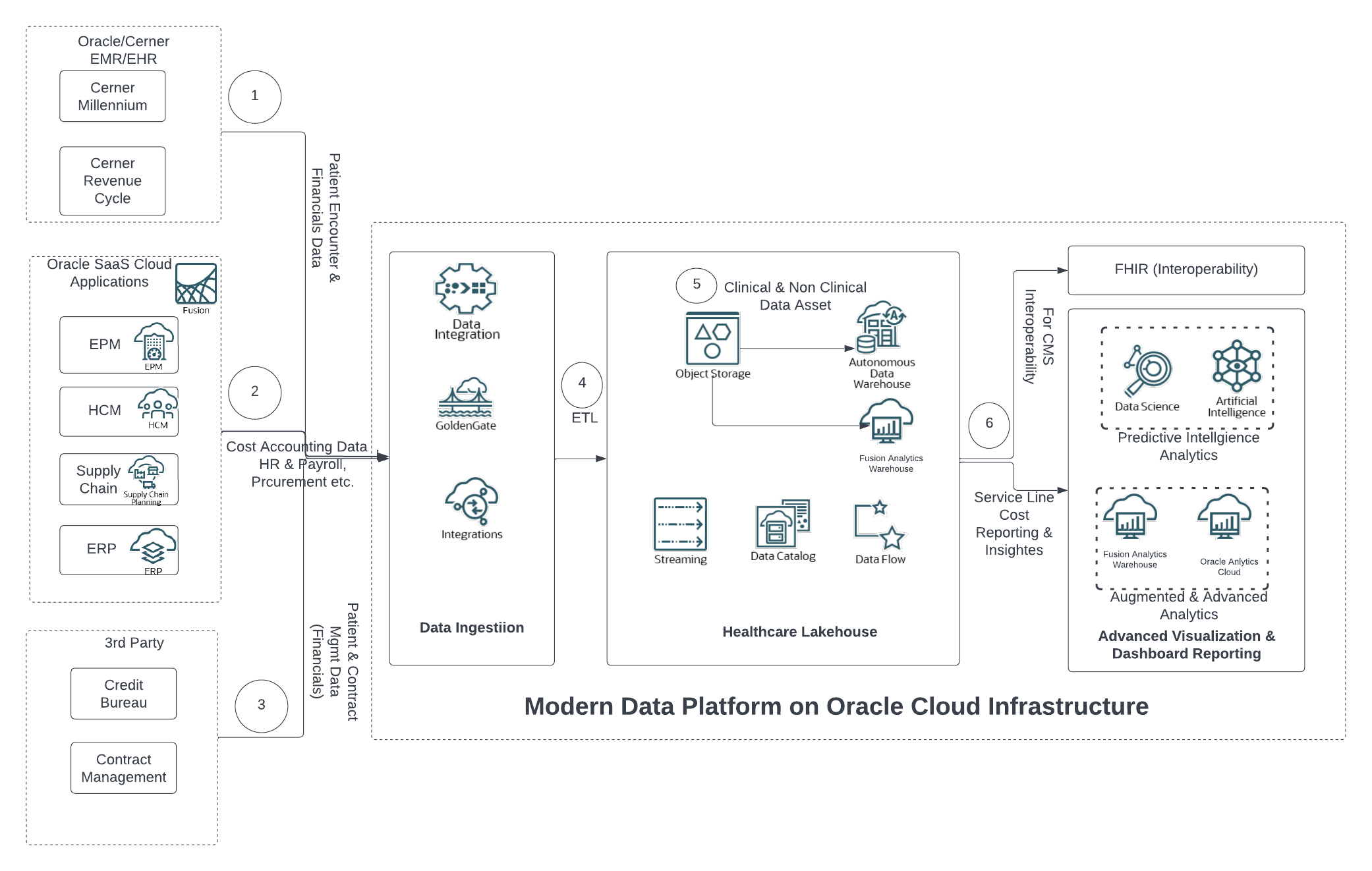Healthcare service line is defined as a patient’s continuous care journey in the hospital from check-in to check-out and after, in treating a specific clinical condition across different lines of business in an integrated system of care.
We have all heard, and some have personally gone through, the challenging healthcare journey during the COVID pandemic. Many healthcare providers spent hours providing quality care to patients without putting financial burdens up-front. Now, healthcare providers are facing immense challenges, including the shortage of workforce, increase in supply-chain issues, and cost.
For hospitals to mitigate this and focus on controlling financial cost, while providing a greater quality of care, leaders need to evaluate and prioritize which service lines are essential to their long-term success, which need to be put on hold or slowed down, and when they need help in creating new service lines. In short, leaders must get a greater visibility into their service lines, process gaps, and revenue cost implications to make decisions and focus on the future success of overall business.
The following sections provide a high-level overview of how Oracle can help customers to digitally transform and derive greater business insights by extracting data from Oracle’s suite of software-as-a-service (SaaS) business applications, Cerner, or third-party electronic health records (EHR) by using Oracle Cloud Infrastructure (OCI)’s platform of services.
Challenges in understanding service lines
As a patient goes through their hospital journey, they engage with various departments for getting the care they need. For example, a cardiology patient is not only treated by the cardiology department service line but also patient registration and administration, nursing, radiology, and more. Most organizations struggle to accurately understand the associated costs, which is essential for their business transformation and future success. Hospital leaders must analyze each service line to better understand the quality of care they’re providing and the cost incurred to provide that kind of service and plan for the future. Leaders often overlook service line analysis, which can contribute to the following major challenges:
-
Difficulty with business transformation efforts
-
Negative impact on overall revenue
-
Providing lower quality of care
-
Lack of planning for future growth and addressing major health care needs in the community
-
Difficulty adopting to change in the healthcare regulation and compliance needs
A patient’s journey
The following graphic shows a conceptual model for the journey that a patient takes in a hospital:

Service line analysis business value
In the ever-changing world of healthcare costs and payments, hospitals see a decline in revenues if they provide poor-quality or high-cost care. To avoid this decline, hospital leaders must understand the financial contribution of each service line and map it to the overall institutional stability and their success in the community and providing those services.
For leaders to better position themselves, they must focus on analyzing service lines in different departments to provide over all business value, including the following factors:
-
How a given service line impacts the overall hospital financially
-
How the service line provides greater value compared to other service lines
-
Whether a service line is productive and helps in workforce optimization
-
How to improve a service line and where to focus
-
How to decommission a service line
-
How a service line can provide value based care to end patients with affordable cost
OCI’s solution
To get deeper insights to a service line’s cost, we need to aggregate data from different sources to provide a unified view of the cost of a service line. At minimum, we need the following information at a high level:
-
Expense and revenue data from each hospital department
-
Fixed and variable cost accounting data, such as what drugs, devices, or inventory must be procured for patient needs
-
Electronic medical records (EMRs) and electronic health record (EHR) data pertaining to patient accounting, demographic, and revenue
-
Any third-party data from credit bureaus related to patients’ financial stability

To aggregate data, several health information systems exist from which we can extract information and provide valuable insights. The following diagram gives a high-level view what data we can consume from different systems to contribute to service line cost Accounting Insights.

Business value realization: How to use OCI for service line cost accounting insights
To determine service line costs across a hospital organization, Oracle provides comprehensive technologies and suite of products across SaaS business applications and OCI. OCI has an open and flexible data platform with the ability to integrate and consolidate data from many sources, including on-premises, other clouds, other health systems, and third-party data platforms. Customers can adopt these technologies to build a next generation modern enterprise data platform with hyper-scale data integration services and achieve a pure autonomous business.
The following conceptual architecture provides a high-level end-to-end overview of developing and adopting a modern data platform that customers can use to analyze service line cost accounting. You can use this architecture to address use cases according to your business needs.

-
Extract patient encounter, revenue, financials data using Oracle Data Integrator (ODI) and GoldenGate from Cerner Millennium & Revenue Cycle.
-
Extract cost accounting, HR, payroll, procurement, and supply chain logistics using ODI and Oracle Integration Cloud (OIC) for Oracle SaaS cloud business applications.
-
Extract and ingest data from your healthcare lakehouse into OCI Object Storage to create a reusable data asset product that you can load into Oracle Autonomous Data Warehouse or used by Data Science Platform for predictive intelligence of patient financial stability for continuous care.
-
Oracle Data Science Platform, Oracle Analytics Cloud, and Fusion Analytics Warehouse can consume clinical and non-clinical data to get deeper insights into service line cost accounting. You can also load this data into the Fast HealthCare Interoperability Resource (FHIR) according to the CMS mandate to exchange data between different business entities.
-
Extract cost accounting, HR, payroll, procurement, and supply chain logistics from Oracle SaaS cloud business applications directly into Fusion Analytics Warehouse. Fusion Analytics Warehouse comes with predefined semantics layers or schemas, or you can build your own custom schemas based on your business needs. You can also create a customize data pipelines that can consume data from Oracle SaaS cloud business applications for service line cost accounting insights.
View your service line with OCI
With Oracle SaaS cloud business applications and Cerner EMR and EHR as data sources, customers can extract and aggregate data to derive not only service line cost accounting insights but other advanced business analytical insights by using Oracle’s modern data platform and services.
To try any of the technologies we’ve mentioned, you can evaluate Oracle Cloud Infrastructure today for free with no commitment.

